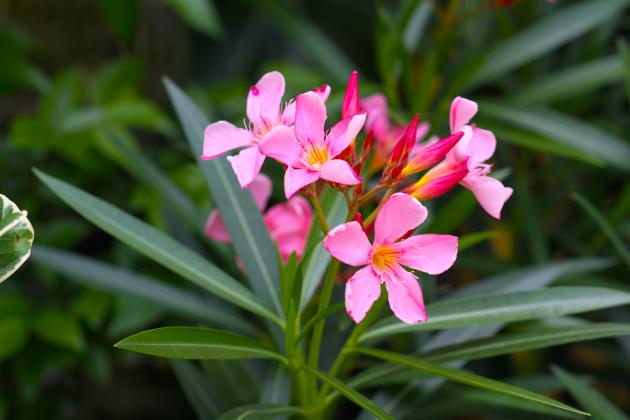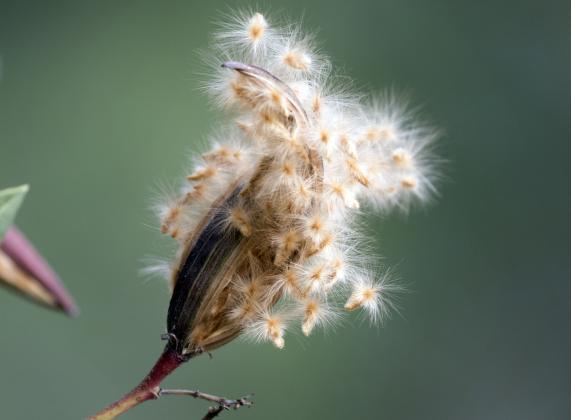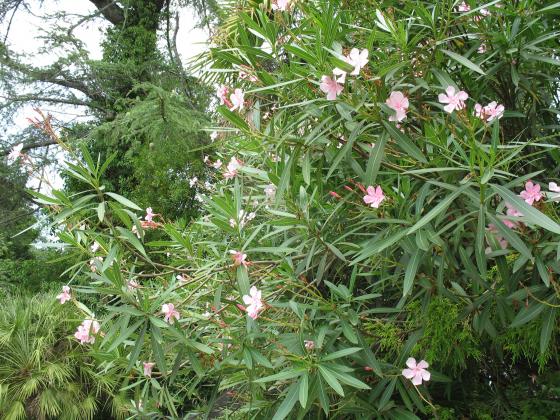Nerium oleander - Poisonous beauty symbolic of regeneration
Nerium oleander, an evergreen shrub, is the only plant in the Nerium genus but there are many cultivars. Beautiful and hardy, oleander made its way around the world following trade routes. It is referenced in the written records of many cultures dating to at least 450 BCE, maybe much earlier. Through the millennia each culture has had its own story of how the plant got its name. Today oleander has naturalized in many places including central and southeast Texas. Heat tolerant with low water needs and able to grow in a broad range of soil types, they are often planted in public spaces and highway medians.
Oleander is 6 to more than 20 feet tall with shorter dwarf varieties. Stems are gray-green. Young opposite leaves turn dark-green and leathery. Leaves of some plants are in pairs and some have 3 or 4 leaves grouped in whorls. They can be from 3 to 12 inches long and ⅓ inch to almost 2 inches wide. The five-petalled flowers, often pink, range from white to red, growing in clusters at the end of each branch. Some are fragrant and some have no scent. The fruit is called a follicle, a pod-like structure that cracks open to release dandelion-like seeds that blow away in the wind.
Texas A&M AgriLife Extension, rangeplants. tamu.edu, in their article “Common Oleander” said that oleander is “probably the most toxic plant in Texas”. It is in the Food and Drug Administration Poisonous Plant Database at fda.gov and is also listed in their article “Potentially Dangerous Items for Your Pet”. For centuries extracts of the plant have been used to kill bugs, rodents and other critters. It is a deadly poison to most animals including humans. The green leaves are so bitter that most animals don’t eat them. Accidental human poisoning can come from using a branch to cook a hotdog or make a whistle, breathing smoke from a burning plant or from contact with the sap for a prolonged period. Withered leaves are not as bitter and if accidentally mixed with feed can poison livestock.
From time to time, throughout the centuries there have been stories about bees making poisonous honey from oleander nectar. But oleander flowers have no nectar so the stories are based on misidentification of another plant. I thought there would be a complicated scientific name for such flowers but they are just called nectarless. Flowers with nectar are called nectarful.
Oleander is the official flower of Hiroshima, Japan, chosen for its power of regeneration. It was the first plant to blossom after the devastation caused in 1945 when the U.S dropped an atomic bomb on the city during World War II.
In 1900 a hurricane destroyed most of Galveston, Texas. Part of the recovery included planting thousands of oleanders which are beautiful and able to recover from the effects of hurricanes. Galveston is known as the Oleander City. Annually it hosts an oleander festival and is home to the International Oleander Society, oleander.org.
Deborah Richardson is a freelance reporter for The Examiner with a fondness for flora in its natural setting.






